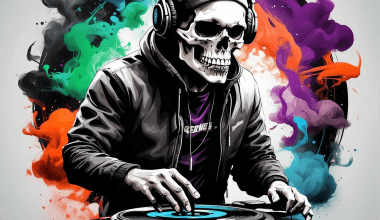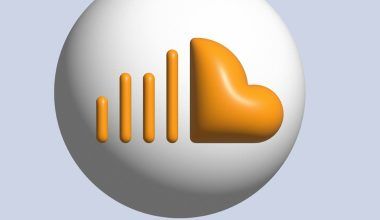Creating music is an art, but making money from it is a smart business move. In today’s digital era, streaming platforms like Spotify, Apple Music, and YouTube are powerful tools for independent artists and creators to generate income. However, simply uploading your track isn’t enough. To truly get paid for your music, you need to understand how to monetize your track on all streaming platforms effectively.
Why Monetizing Your Music Matters
Monetizing your music ensures that you’re rewarded for your hard work and creativity. When you enable monetization, every stream, download, or use of your track contributes to your revenue. This not only gives you financial stability but also motivates you to create more music. The process might sound overwhelming, but it’s simpler than you think with the right guidance.
Understanding Music Monetization on Streaming Platforms
Music monetization refers to earning money when your songs are streamed, downloaded, or used in content. Each platform offers different ways to monetize tracks, but the core idea is the same: getting paid for your music’s usage. From ad-supported models to premium subscriptions, you can leverage multiple revenue streams.
Step-by-Step Guide to Monetizing Your Track
1. Distribute Your Music Professionally
The first step to monetizing your track is ensuring that it’s available on all major streaming platforms. This is where digital distribution services come into play. Platforms like TuneCore, DistroKid, and CD Baby help you distribute your tracks globally.
These services ensure your track gets placed on Spotify, Apple Music, Amazon Music, and even niche platforms like Deezer. Choose a distributor that aligns with your goals, whether it’s maximizing royalties or offering advanced analytics.
2. Register Your Music Rights
Before your track can generate income, it’s important to protect your rights. Registering your music with a Performing Rights Organization (PRO) ensures that you’re paid for public performances, including radio plays, live shows, and streaming.
Organizations like ASCAP, BMI, and PRS are crucial for collecting performance royalties. Additionally, ensure you have an ISRC (International Standard Recording Code) for your track. This unique code helps track and monetize your song globally.
3. Leverage YouTube Content ID
YouTube is a massive platform for music discovery, and it offers significant revenue potential. By using Content ID, you can earn money whenever your track is used in a YouTube video.
Once you upload your track to YouTube via a distributor, the Content ID system identifies your music in other creators’ videos. Every time someone uses your song, you get a share of the ad revenue. This is a passive way to earn while expanding your audience.
4. Enable Monetization Features on Each Platform
Different streaming platforms offer various monetization options. Make sure to enable these features for every platform where your track is available.
For instance:
- On Spotify, enroll in their Spotify for Artists program.
- For Apple Music, ensure your track is listed through an approved distributor.
- For SoundCloud, join their Premier Program to earn revenue directly.
5. Create Engaging Content Around Your Music
Fans don’t just stream music; they connect with the stories behind it. Share behind-the-scenes videos, lyric breakdowns, and music creation journeys. Engaging content encourages streams and builds a loyal fan base.
You can use platforms like Instagram Reels, TikTok, or even live streams on Facebook to promote your tracks. Every share and view increases the chances of your track being discovered and streamed.
6. Optimize Metadata for Discoverability
Metadata plays a significant role in how your track is discovered on streaming platforms. Ensure that your song title, artist name, genre, and tags are accurate and optimized. Proper metadata improves your song’s chances of appearing in playlists and recommendations.
7. Collaborate with Playlist Curators
Playlists drive a significant portion of music discovery on streaming platforms. Collaborate with curators of both editorial and independent playlists to include your track. This can increase your streams and, consequently, your earnings.
Reach out to curators on platforms like Spotify, or even consider submitting your track to playlist-pitching services.
Social media is a free and effective tool to drive streams to your music. Regularly share links to your track, post updates, and interact with your audience. Create a consistent strategy across platforms like Instagram, Twitter, and TikTok to amplify your reach.
You can also use targeted ads to direct listeners to your track. Platforms like Facebook Ads and Spotify Ad Studio are great for this purpose.
9. Build Your Fanbase with Email Marketing
Email lists might seem old-school, but they are incredibly effective. Building a mailing list lets you connect directly with your fans. Share exclusive updates, concert alerts, or new music announcements.
Every email is an opportunity to remind your fans to stream your tracks, which directly contributes to your revenue.
10. Explore Licensing Opportunities
Beyond streaming, licensing your track for TV shows, movies, or commercials can be a lucrative income source. Websites like Musicbed, Songtradr, and AudioJungle connect artists with licensing opportunities.
By licensing your track, you not only earn upfront fees but also gain exposure to a wider audience.
11. Analyze Your Performance and Adapt
Success in music monetization isn’t static. Regularly review your track’s performance using analytics tools provided by platforms like Spotify for Artists or Apple Music for Artists.
These insights show you where your streams are coming from, who your listeners are, and how you can tailor your promotion efforts. Use this data to refine your strategies and grow your revenue.
12. Engage with Your Fans Directly
Fans are your biggest supporters. Hosting Q&A sessions, replying to comments, and organizing live events can deepen your connection with them. Engaged fans are more likely to stream your track repeatedly, boosting your monetization potential.
Conclusion
Monetizing your track on all streaming platforms is not just about earning money; it’s about turning your passion into a sustainable career. From choosing the right distributor to engaging with your fans, every step you take adds to your success. With consistent effort and smart strategies, you can ensure your music reaches a global audience and gets the recognition it deserves.
Start today, and take control of your music’s potential to get paid. After all, every stream counts when you’ve mastered how to monetize your track on all streaming platforms.
For further reading, explore these related articles:
- The Ultimate Guide to English Dance Songs: Get Ready to Groove
- Exploring “I” Movie All Songs: A Musical Journey Through Shankar’s Masterpiece
For additional resources on music marketing and distribution, visit Deliver My Tune.






